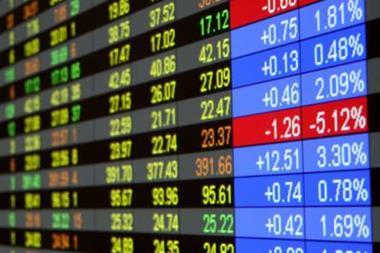Investors dump Admiral stock despite 29% boost in profits and 53% turnover growth
Admiral has admitted that its recent strong growth has come at the expense of underwriting profitability, as the stock market reacted badly to the motor insurer’s first-half 2011 results. Investors should also expect slower growth from the insurer in future.
Admiral’s profit after tax jumped 29% to £116.5m in the first half of 2011, from £90m in the first half of 2010. Total turnover jumped 53% to £1.1bn from £720.5m while net insurance premium revenue – after stripping out the amounts Admiral cedes to its panel of reinsurers – jumped 61% to £201.5m from £125.3m. Insured vehicle count increased 33% to 3.15m from 2.37m.
Yet investors responded by dumping Admiral stock, resulting in a 12% drop on 24 August, the day the results were announced, followed by a further 5.5% fall the following day. This was followed by a small recovery of 3% on 26 August.
Despite the strong profit and turnover growth, shareholders’ concerns were focused in part on Admiral’s admission that 5.6% of its profits come from referral fees, but also on the 7% slip in UK motor underwriting profit to £21.7m from £23.3m and the 7.5 percentage point jump in combined ratio to 90.4% from 82.9%.
The main reason for the decline in underwriting profitability, Admiral said, was a sharp drop in reserve releases to just £4m in the first half of 2011 from £17.3m in the same period last year. This was caused by worse-than-projected claims costs from earlier years.
“Inevitably some price is being paid for that growth,” Admiral chief operating officer David Stevens said. “We have achieved it partly by taking prices up during 2010 a little bit slower than the market. We are also seeing that a bigger percentage of our book is new business versus renewal business and the most profitable business is renewal. That had an adverse impact.”
But Stevens added that Admiral’s 90.4% combined ratio “is looking very good relative to the market as a whole, which was 122% in 2010”. He also pointed out that, stripping out the effect of reserve releases, Admiral’s UK motor loss ratio improved three points to 78%.
“That is essentially the impact of premium increases coming through, which were very substantial in 2010 and continued into the first half of 2011,” Stevens said. Although
Admiral’s price hikes lagged the market in 2010, the company has sought to redress the balance in 2011.
“In 2011, we think we have actually gone up a bit more than the market,” Stevens said.
In part because of the rate rises, Admiral’s rapid pace of growth in recent reporting periods is unlikely to be sustained. “The rate of growth will begin to come down from the very heady levels that you have seen in the last year or 18 months,” Stevens said.
The forecast growth slowdown has been acknowledged by analysts. Jefferies equity analyst James Shuck said in a research note that investors should start considering Admiral an income stock rather than a growth stock. “We believe that the group will become much more selective over additional vehicle growth in H2 and beyond, especially given the likely return of competition [from Aviva, Zurich and RBS Insurance],” Shuck said.
Price comparison site Confused.com was again a slight blot on Admiral’s copy book in the first half of 2011. While turnover increased 10% to £40m and market share held steady at 24% after a year and a half of decline, pre-tax profit fell to £8.2m from £8.8m following increased marketing spend and intense competition.
But Stevens defended its performance. “There is a marketing war between the price comparison sites, which makes it harder to make money,” he said. “Holding market share and making £8m – versus £9m a year ago – is not a bad outcome as far as we are concerned.”
Hosted by comedian and actor Tom Allen, 34 Gold, 23 Silver and 22 Bronze awards were handed out across an amazing 34 categories recognising brilliance and innovation right across the breadth of UK general insurance.














































No comments yet